Following up my question where I used the answer to generate data on my calendar called maintenance calendar showing the aircraft's maintenance schedule. This is the MySQL query for it:
SELECT DISTINCT s.reg AS 'reg',
a.date AS 'date'
FROM (SELECT Curdate()
+ INTERVAL (a.a + (10 * b.a) + (100 * c.a)) day AS Date
FROM (SELECT 0 AS a
UNION ALL SELECT 1
UNION ALL SELECT 2
UNION ALL SELECT 3
UNION ALL SELECT 4
UNION ALL SELECT 5
UNION ALL SELECT 6
UNION ALL SELECT 7
UNION ALL SELECT 8
UNION ALL SELECT 9) AS a
CROSS JOIN (SELECT 0 AS a
UNION ALL SELECT 1
UNION ALL SELECT 2
UNION ALL SELECT 3
UNION ALL SELECT 4
UNION ALL SELECT 5
UNION ALL SELECT 6
UNION ALL SELECT 7
UNION ALL SELECT 8
UNION ALL SELECT 9) AS b
CROSS JOIN (SELECT 0 AS a
UNION ALL SELECT 1
UNION ALL SELECT 2
UNION ALL SELECT 3
UNION ALL SELECT 4
UNION ALL SELECT 5
UNION ALL SELECT 6
UNION ALL SELECT 7
UNION ALL SELECT 8
UNION ALL SELECT 9) AS c) a
INNER JOIN maintenance_sched s
ON a.date >= s.date_from
AND a.date <= s.date_to
WHERE Month(date) = '".$month."'
AND Dayofmonth(date) = '".$dayArray["mday"]."'
AND Year(date) = '".$year."'
Here is the maintenance_sched database:

And the calendar looks like this (based on the data from maintenance_sched):

Then, I have another calendar called reservation calendar with the same code as the maintenance calendar though with different query. This is the reservation calendar query: SELECT acode FROM reservation WHERE month(etd) = '".$month."' AND dayofmonth(etd) = '".$dayArray["mday"]."' AND year(etd) = '".$year."' ORDER BY etd".
The reservation table is this:

And the reservation calendar looks like this:

EDIT:
What I want to do is: have these two calendar in one calendar with the result of maintenance_sched query outputted as string with strikethrough. But I can't seem to make the two queries work out together as one.